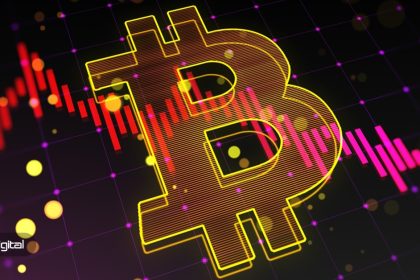In the world of digital currencies and blockchain technology, two buzzwords that have been gaining attention recently are quasi-elite tokens and NFT (non-fungible tokens). Both these tokens are unique and differ in important aspects. In this article, we will explore the differences between semi-fungible and non-fungible tokens and what makes each of them unique.
What is a semi-identical token?
Semi-coin tokens are a new type of token created through a process called sharding. Sharding is a process that allows a blockchain to be divided into smaller parts. The blockchain can then process transactions in parallel. This makes the blockchain more scalable and able to handle more transactions per second.
These types of tokens are created by taking a single asset, such as a work of art or a digital asset, and dividing it into multiple pieces, each piece is then assigned a unique identifier and can be traded separately. This means that an asset can be owned by several people at the same time.
Semi-elite tokens are designed to be more fungible than traditional NFTs. Fungibility refers to the ability of an asset to be exchanged for another asset of equal value. For example, if you have a $100 bill, you can exchange it for two $50 bills and the value remains the same. Semi-coin tokens provide more flexibility in trading, as each share can be traded separately and the total value of the asset is based on the sum of its shards.

What is an NFT Token?
Non-Fungible Tokens are a type of digital asset that gives an individual ownership of a unique item such as a piece of art, music or video. NFTs are created on a blockchain, which means they are stored and tracked in a decentralized network and thus secured.
These types of tokens are designed to be completely unique and irreplaceable. This means that each NFT represents a specific asset and cannot be exchanged for any asset of equal value. For example, if you have an NFT that represents a piece of digital art, you cannot exchange it for another NFT that represents a different piece of digital art.
NFTs are increasingly popular in the art world because they allow artists to sell their work directly to collectors without the need for intermediaries such as art galleries. They also provide a way for collectors to prove ownership of a unique piece of art or collectible.
The difference between quasi-elite tokens and NFTs
Both cryptocurrencies and NFTs are unique digital assets, but they differ in several important ways:
The main difference between semi-coins and NFTs is their fungibility. Semi-coin tokens are more fungible than NFTs because each share can be traded separately and the overall value of the asset is based on the sum of its shards. NFTs, on the other hand, are completely unique and irreplaceable.
Semicoins and NFTs also differ in ownership structure. With semi-identical tokens, multiple people can own a single asset, as each shard can be owned separately. This feature leads to more flexibility in ownership and transaction. NFTs, on the other hand, represent ownership of a unique asset, meaning that only one person can own it at a time.
The value of these two types of tokens is also different. Semi-coin tokens derive their value from the total value of the asset, which is based on the sum of its shards. The value of each piece is determined by its uniqueness and rarity. On the other hand, the value of NFTs is based on the uniqueness and rarity of their asset as well as the demand for that asset. This means that NFTs can have a much higher value than semi-identical tokens because they represent ownership of a unique asset.

Uses
Semi-coin tokens and NFTs have different uses. Semi-coin tokens are designed to be more fungible and provide more flexibility in transactions. This makes them ideal for assets that aren’t completely unique but still have value. For example, semi-identical tokens can be used for digital collectibles or pieces of art that are part of a series.
NFTs, on the other hand, are ideal for assets that are completely unique and valuable due to their rarity. These assets include unique pieces of art or collectibles, as well as digital assets such as music or video.
Smart contract functionality
Another difference between cryptocurrencies and NFTs is the level of smart contract functionality. NFTs are typically created using smart contracts that can include terms and conditions on how the asset is used and distributed, meaning that NFTs can be programmed to include royalties to the original creator or terms on how the asset is displayed or used.
Semi-identical tokens may not have the same level of performance as a smart contract, as they are designed to be more fungible and flexible. However, they can still include basic smart contract functionality, such as rules for how to trade or own shares.
Conclusion
SFT tokens are designed to be more fungible and flexible, while NFTs are completely unique and non-fungible. Semi-identical tokens are ideal options for assets that aren’t completely unique but still valuable, while NFTs are ideal for one-of-a-kind pieces of art or collectibles.
In general, both cryptocurrencies and NFTs are exciting new developments in the world of blockchain technology and have the potential to revolutionize the way digital assets are bought, sold, and owned. It will be interesting to see how these tokens are used and how they affect the digital asset market as the technology continues to evolve.
Source :
RCO NEWS

















